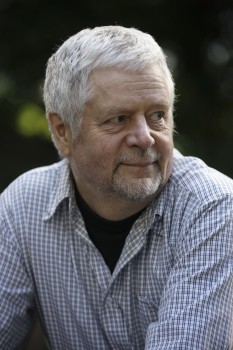Search results for "2010/05/song-without-words"
Nationalism in war and peace
3 May 2012 | Reviews
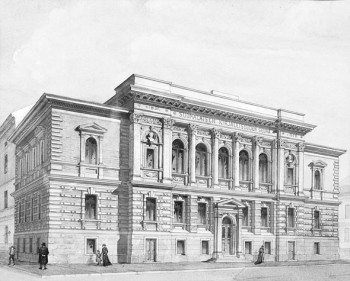
House of words: the Finnish Literature Society building in Helsinki. Architect Sebastian Gripenberg, 1890. Watercolour by an unknown Russian artist, 1890s
Kai Häggman
Sanojen talossa. Suomalaisen Kirjallisuuden Seura 1890-luvulta talvisotaan
[In the house of words. The Finnish Literature Society from the 1890s to the Winter War]
Helsinki: Suomalaisen Kirjallisuuden Seura, 2012. 582 p., ill.
ISBN 978-952-222-328-9
€54, hardback
The Finnish Literature Society has, throughout its history, played a multiplicity of roles: fiction publisher, research institute specialising in folklore studies, organiser of mass campaigns in support of national projects, literary gatekeeper, learned society, controller of language development.
The priorities of these areas of interest have changed from decade to decade, so Kai Häggman has taken on an exceptionally difficult subject to describe. He has, however, succeeded brilliantly in gathering the different threads together, using as as lowest common denominator the ideas of nationalism and nation whose role in global modernisation and European history have been studied, among others, by the British historians Ernest Gellner and Eric Hobsbawm. More…
Melba, Mallinen and me
30 June 1993 | Archives online, Fiction, Prose
From Fallet Bruus (‘The Bruus case’, Söderströms, 1992; in Finnish, Tapaus Bruus, Otava), a collection of short stories
After the war Helsingfors began to grow in earnest.
Construction started in Mejlans [Meilahti] and Brunakärr [Ruskeasuo]. People who moved there wondered if all the stone in the country had been damaged by the bombing or if all the competent builders had been killed; if you hammered a nail into a wall you were liable to hammer it right into the back of your neighbor’s head and risk getting indicted for manslaughter.
Then the Olympic Village in Kottby [Käpylä] was built, and for a few weeks in the summer of 1952 this area of wood-frame houses became a legitimate part of the city that housed such luminaries as the long-legged hop-skip-and-jump champion Da Silva, the runner Emil Zatopek (with the heavily wobbling head), the huge heavyweight boxer Ed Saunders and the somewhat smaller heavyweight Ingemar Johansson who had to run for his life from Saunders. More…
Narcissus in winter
31 December 1984 | Archives online, Fiction, Prose
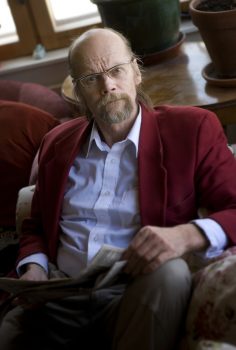
Risto Ahti. Kuva: Harri Hinkka
Poems from Narkissos talvella (‘Narcissus in winter’, 1982). Introduction by Pertti Lassila
Risto Ahti (born 1943) published his first work in 1975. His poetic expression finds form remarkably often in prose poems, and Narkissos talvella is made up exclusively of these. His poems transmute language into a mystical, surreal world, sometimes enigmatic and subjective in the extreme, and at its best strangely suggestive. It is as if Ahti’s world were in a state of constant change, subjected to a relentless process of demolition and rebuilding. The experience of the individual, generally his encounter with truth, is central to many of Ahti’s poems; the inner reality of a person manifests itself as more essential than the outward appearance. Ahti’s poems exhibit a fruitful contradiction: on the one hand, the accuracy with which he uses words and, on the other, the continual shape-changing and lack of definite boundaries of the world they describe. More…
Wolf-eye
30 June 2004 | Archives online, Fiction, Prose
Extracts from the novel Käsky (‘Command’, WSOY, 2003). Introduction by Jarmo Papinniemi
Only once he had led the woman into the boat and sat down in the rowing seat did it occur to Aaro that it might have been advisable to tie the woman’s hands throughout the journey. He dismissed the thought, as it would have seemed ridiculous to ask the prisoner to climb back up on to the shore whilst he went off to find a rope.
It was a mistake.
After sitting up all night, being constantly on his guard was difficult. Sitting in silence did not help matters either, but they had very few things to talk about. More…
The miracle of the rose
30 June 1997 | Archives online, Fiction, Prose
Extracts from the novel Naurava neitsyt (‘The laughing virgin’, WSOY, 1996). The narrator in this first novel by Irja Rane is an elderly headmaster and clergyman in 1930s Germany. In his letters to his son, Mr Klein contemplates the present state of the world, hardly recovered from the previous war, his own incapacity for true intimacy – and tells his son the story of the laughing virgin, a legend he saw come alive. Naurava neitsyt won the Finlandia Prize for Fiction in 1996
28 August
My dear boy,
I received your letter yesterday at dinner. Let me just say that I was delighted to see it! For as I went to table I was not in the conciliatory frame of mind that is suitable in sitting down to enjoy the gifts of God. I was still fretting when Mademoiselle put her head through the serving hatch and said:
‘There is a letter for you, sir.’
‘Have I not said that I must not be disturbed,’ I growled. I was surprised myself at the abruptness of my voice.
‘By your leave, it is from Berlin,’ said Mademoiselle. ‘Perhaps it is from the young gentleman.’
‘Bring it here,’ I said. More…
The prisoner and the prophet
30 June 1997 | Archives online, Fiction, poetry
Poems from Timmermannen (‘The carpenter’, Söderströms, 1996). Introduction by Jyrki Kiiskinen
The greatest message
Reader, love is
a secret, waiting
for wind, not a choice
between loving or not.
As commandment, degraded
to demand, it will soon be
fanatic like a wound,
a form of hate. How
could a secret
become reality
without dying? Every
decree destroys its region. Made a law
goodness turns
into the protecting
skin, with which the good
touches everything. A demand
for understanding, that,
which we call wisdom,
makes of wisdom
an armour, a cold
father around us.
The real communication is
his life. Against evil stands
the tale of a face.
How could such a secret
become real
or die? More…
Breton without tears
31 March 1994 | Archives online, Fiction, Prose
Extracts from Euroopan reuna (‘The edge of Europe’, Otava, 1982). Introduction by H. K. Riikonen
I am reading a book, it says pour l’homme latin ou grec, un forme correspond à un être; pour le Celte, tout est metamorphose, un même individu peut prendre des apparences diverses, so it says in the book. A strange claim, considering that the word metamorphosis is Greek, and that the best-known book about metamorphoses, Ovid’s Metamorphoseon libri XV was written in Latin. In the myths of all peoples, at least the ones whose oral poetry was recorded in time, such as the Greeks, Serbs, Slavs, Finns, or Aztecs, metamorphoses play a very important part, the Celts are not an exceptional tribe in this respect. The author must mean that the Celts still live in mythical time, the time of metamorphoses when the human being assumed shapes, was able to fly as a bird, swim as a fish, howl as a wolf, and to crown his career by rising up into the sky as a constellation. Brittany is part of the Armorica Joyce tells us about in Finnegans Wake, that book is incomprehensible if one does not know Ireland, and now I see that Brittany is the key to one of the book’s locked rooms. I thought I already had keys to all the rooms after Dublin, the Vatican, and Athens, but one door was and remained closed, the key is here now, in my hand, I can get into all the rooms in the book, and I am home even if I should happen to get lost. The room creates the person, she becomes another when she goes from one room to another, this is metamorphosis, and when she leaves the house she disappears, she no longer exists. The legend on the temple at Delphi, gnothi seauton, know thyself, has led Occidentals onto the false track that is now becoming a dead end, polytheistic religions correspond to the order of nature, but as soon as the human starts to imagine that she knows herself, as soon as the metamorphic era ends, monotheism is born, the human being creates god in her own image, and that is the source of all evil. Planted like traffic signs at the far end of this cul-de-sac stand the hitlers and brezhnevs and reagans and thatchers, new leaves are appearing on the trees, the sun is shining. Landet som icke är* är en paradox: landet blev befintligt därigenom att Edith Södergran sade att det icke är. On the sea sailed a silent ship*, as I tracked my shoeprints across the sand on the beach, it was like walking on a street made out of salty raw sugar, I felt desolate. The wind bent the grasses, the sun warmed the back of my sweater, of course the sun always has the last word, I thought, things should be as they are, this thought gave me peace of mind. I walked past the cows, two of them already chewing the cud, the others still grazing, they stood in a line and raised their heads, stood at attention, as it were, as I walked past. I was not entirely sure that I was heading in the right direction, but then I saw the boucherie and knew that there was a café nearby. Madame greeted me in a friendly fashion, brought me a calvados and a beer and sat down for a chat, wanted to know if I liked the countryside here. I said that things looked the same here as in Ireland, she said that was true, but she had never been to Ireland. I finished my drinks and paid, left, decided to walk along the beach. I saw gun emplacements and two bunkers. I crawled into a bunker. Inside, it was dark and damp. I looked through the embrasure at the sea. I thought of the boys who had been incarcerated here. They had been given a death sentence. I examined a rusty object, what was it, I looked at it more closely, it was an axle from a gun’s undercarriage. As I arrive in my home yard, I note that the lilacs are beginning to bloom. More…
Leena Lander: Liekin lapset [Children of the flames]
23 June 2010 | Mini reviews, Reviews
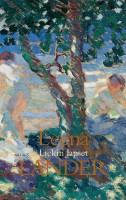 Liekin lapset
Liekin lapset
[Children of the flames]
Helsinki: Siltala, 2010. 419 p.
ISBN 978-952-231-022-1
€ 27.30, hardback
Novels by Leena Lander (born 1959) have been translated into more than 20 languages. Liekin lapset is a family saga, told in two parallel timelines. One is a portrait of a small coastal community in south-western Finland from the turn of the 20th century up to the end of the Finnish civil war in 1918 and the years following it. Life in the area is governed by a sawmill and a manor, socially dividing the community in two. Saida, Joel, Anders and Arvi grow up together, the future workers dreaming of socialism and the sons of the manor playing warlords. In the contemporary strand of the story, Sakari Salin, Saida’s grandson, begins researching his grandmother’s life. The documents reveal some rather remarkable events: here, the author defends the rights of those who were on the losing side in the civil war and creates a lively – as well as historically grounded – portrait of the times. The dialogues and characters in this novel work well, and the structure supports a complex system of psychosocial interconnections, in which the present finds an explanation in the past.
Toivo Flink: Kotiin karkotettavaksi: Inkeriläisen siirtoväen palautukset Suomesta Neuvostoliittoon [Exiled home: The return of Ingrian emigrants from Finland to the Soviet Union]
15 October 2010 | Mini reviews, Reviews
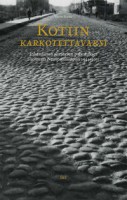 Kotiin karkotettavaksi: Inkeriläisen siirtoväen palautukset Suomesta Neuvostoliittoon 1944–1955
Kotiin karkotettavaksi: Inkeriläisen siirtoväen palautukset Suomesta Neuvostoliittoon 1944–1955
[Exiled home: The return of Ingrian emigrants from Finland to the Soviet Union, 1944–1955]
Helsinki: Finnish Literature Society, 2010. 320 p., ill.
ISBN 978-952-222-183-4
33 €, paperback
It has been 65 years since the Allied Commission operation to repatriate Finnic Ingrian emigrants from Finland to the Soviet Union was completed. During the Continuation War (1941–1944), 63,000 Ingrian civilians fled to Finland to avoid the war; 56,000 of them were returned to the Soviet Union at the order of the Russian-dominated Allied Commission. It is estimated that half of those remaining in Finland secretly fled to Sweden. Ingrians continued to be returned from Finland to the Soviet Union for ten more years. The Ingrians had been promised they would be returned to their former home areas around St Petersburg, but they were actually transferred to more remote parts of the Soviet Union. In this first study to deal exclusively with the travails of the Ingrians, Flink has used Russian archives to uncover how and where the population was moved. This subject has long been a sensitive issue both in domestic and foreign affairs. According to Flink, his research would not have been possible if the return of Ingrians to Finland had not begun in 1990. (There have been about 30,000 immigrants since, and now the state is planning to terminate the right of return.)
Matti Yrjänä Joensuu: Harjunpää ja rautahuone [Harjunpää and the iron room]
19 November 2010 | Mini reviews, Reviews
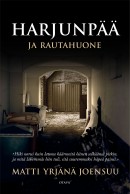 Harjunpää ja rautahuone
Harjunpää ja rautahuone
[Harjunpää and the iron room]
Helsinki: Otava, 2010. 302 p.
ISBN 978-951-1-24742-5
€ 26, hardback
This book’s shocking opening scene, a cot death, is not followed by anything that lightens the tone. Finland’s best-selling crime writer, Matti Yrjänä Joensuu (born 1948) – whose work has been translated into nearly 20 languages – focuses here on a criminal investigation conducted by Inspector Timo Harjunpää into the murderer of several wealthy women. The victims are linked via their purchases of sex; the detective’s attention soon falls on Orvo, a masseur who also turns tricks as a gigolo. Nearly every scene is shot through with themes of lovelessness, exploitation and the connection between malice and sex. Harjunpää is an empathetic, slightly rumpled cop who has an ambitious yet somewhat downbeat attitude to his job. Joensuu’s Harjunpää ja pahan pappi (Priest of Evil) was published in English in 2006. Joensuu himself is a retired police officer; his particular strength as an author is his extraordinarily precise, realistic portrayal of police work. But it’s not just about who did what; why they did it is equally important. One reason for Joensuu’s popularity is his extremely well-developed understanding of human nature. He observes and analyses, but never judges.
Tapani Bagge: Maalla [In the country]
31 January 2011 | Mini reviews, Reviews
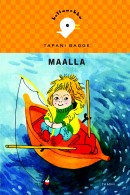 Maalla
Maalla
[In the country]
Kuvitus [ill. by]: Hannamari Ruohonen
Helsinki: Tammi, 2010. 64 p.
ISBN 978-951-31-4748-8
€9.50, hardback
There have been plenty of books for beginning readers with action-packed plots full of breathtaking twists and turns. Fortunately there are still books that leave room for a more ‘easy does it’ reading style. One of them is this, the sixth title in Tapani Bagge’s series about a girl called Kaisa. Kaisa travels to the countryside with her father and her father’s partner Sirkka. Their journey is overshadowed by the death of Kaisa’s grandmother, and the little girl believes that nothing at her grandma’s place will ever be the same again. Bagge’s extensive work on this material is evident in his spare, finely tuned prose. He portrays the grieving girl’s differing shades of emotion beautifully. Kaisa believes that her grandma has changed into a butterfly following her death. So the butterfly fluttering around in the attic needs to be saved – but this of course has further-reaching consequences…. Hannamari Ruohonen’s black-and-white illustrations provide a lovely depiction of care and protection in the family.
Translated by Ruth Urbom


